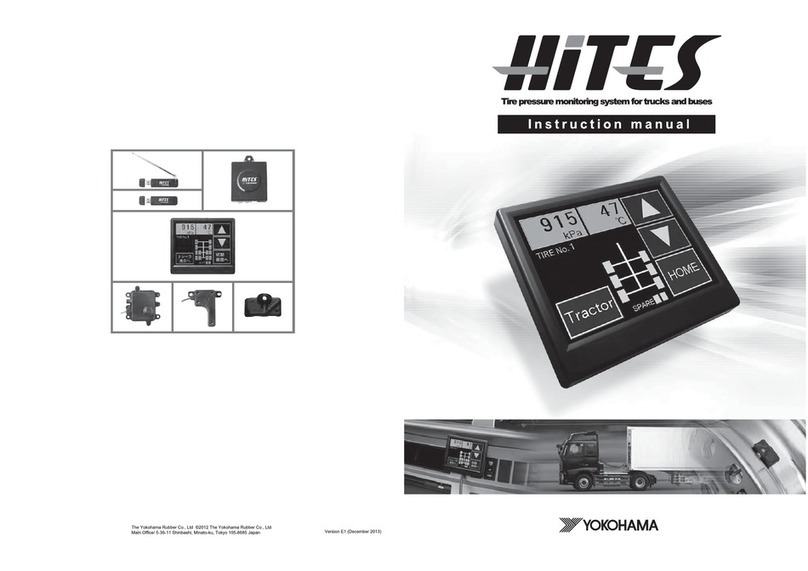
<1. Introduction>3
IM 01E25A01-01EN
1.1 For Safe Use of Product
For the protection and safe use of the instrument and
the system in which this instrument is incorporated, be
sure to follow the instructions and precautions on safety
that is stated in this manual whenever you handle the
instrument. Take special note that if you handle the
instrument in a manner that violated these instructions,
the protection functionality of the instrument may be
damaged or impaired. In such cases, YOKOGAWA
shall not be liable for any indirect or consequential loss
incurred by either using or not being able to use the
Instrument.
(1) General
• This instrument conforms to EN61326-1, EN61326-
2-3, EN61326-2-5, EN61000-3-2, and EN61000-3-3
(EMC standard).
• This instrument is an EN61326-1 (EMC standard),
Class A (for use in commercial, industrial, or business
environments).
• This instrument (General-purpose type) is complied
with IP66 and IP67 in the IP Protection Grade.
YOKOGAWA assumes no liability for the customer’s
failure to comply with these requirements.
• This instrument (Submersible type) is complied with
IP68 in the IP Protection Grade.
YOKOGAWA assumes no liability for the customer’s
failure to comply with these requirements.
• This instrument is designed for indoor and outdoor
use.
• This instrument is Micro Pollution Degree: 2.
• This instrument is Macro Pollution Degree: 4.
• This instrument is designed for altitude at installation
Site Max. 2000 m above sea level.
• This instrument is installation Category (Overvoltage
category): II.
CAUTION
This instrument is a Class A instrument in the
EN61326-1(EMC standard). Operation of this
instrument in a residential area may cause radio
interference, in which case the user is required to take
appropriate measures to correct the interference.
The minimum ambient temperature is limited by the
minimum uid temperature of the sensor (the lining).
For more information, read the applicable general
specications as listed in Table 1.1.
The owmeter may be used in an ambient humidity
where the relative humidity ranges from 0 to 100%.
However, avoid long-term continuous operation at
relative humidity above 95%.
WARNING
• Purpose of use
This instrument is the Magnetic Flowmeter for use of
measuring the liquid ow. Do not use this instrument
for other purposes.
WARNING
• Installation, wiring and maintenance of the magnetic
owmeter must be performed by expert engineer
or skilled personnel. No operator shall be permitted
to perform procedures relating to installation, wiring
and maintenance.
• Wiring work should be done adequate wire, sleeve
crimp and torque force. Use terminal with insulating
cover for the power supply wiring and protective
grounding wiring. Do not pull the wires too much
strongly in order to prevent electric shocks caused
by their damage.
• Do not open the cover in wet weather or humid
environment. When the cover is open, stated
enclosure protection is not applicable.
• Ensure that the power supply is o in order to
prevent electric shocks.
• When opening the cover, wait for more than 20
minutes after turning o the power. Only expert
engineer or skilled personnel are permitted to open
the cover.
• When opening and closing the transmitter cover, be
sure to handle the transmitter cover carefully so that
there are no damage and foreign matter adhesion at
its threads and O-ring.
• This instrument employs the parts which are
aected by a function damage caused by static
electricity. Thus, you should do the antistatic work
using an anti-static wrist band for it and be careful
to avoid touching each electrical parts and circuitry
directly.
• When connecting the wiring, check that the supply
voltage is within the range of the voltage specied
for this instrument before connecting the power
cable. In addition, check that no voltage is applied to
the power cable before connecting the wiring.
• To prevent electric shocks, ensure the electrical
wiring cover is completely attached after the wiring
work.
• To prevent electric shocks, do not impress over
rated voltage to each input/output terminals.
• If there is any unused electrical connection, use
the blanking plug to cover which comes with this
instrument or which is supplied by YOKOGAWA.
The blanking plug should be fastened into the
unused electrical connection without any mistake. If
not, stated enclosure protection is not applicable.
1
Introduction




























